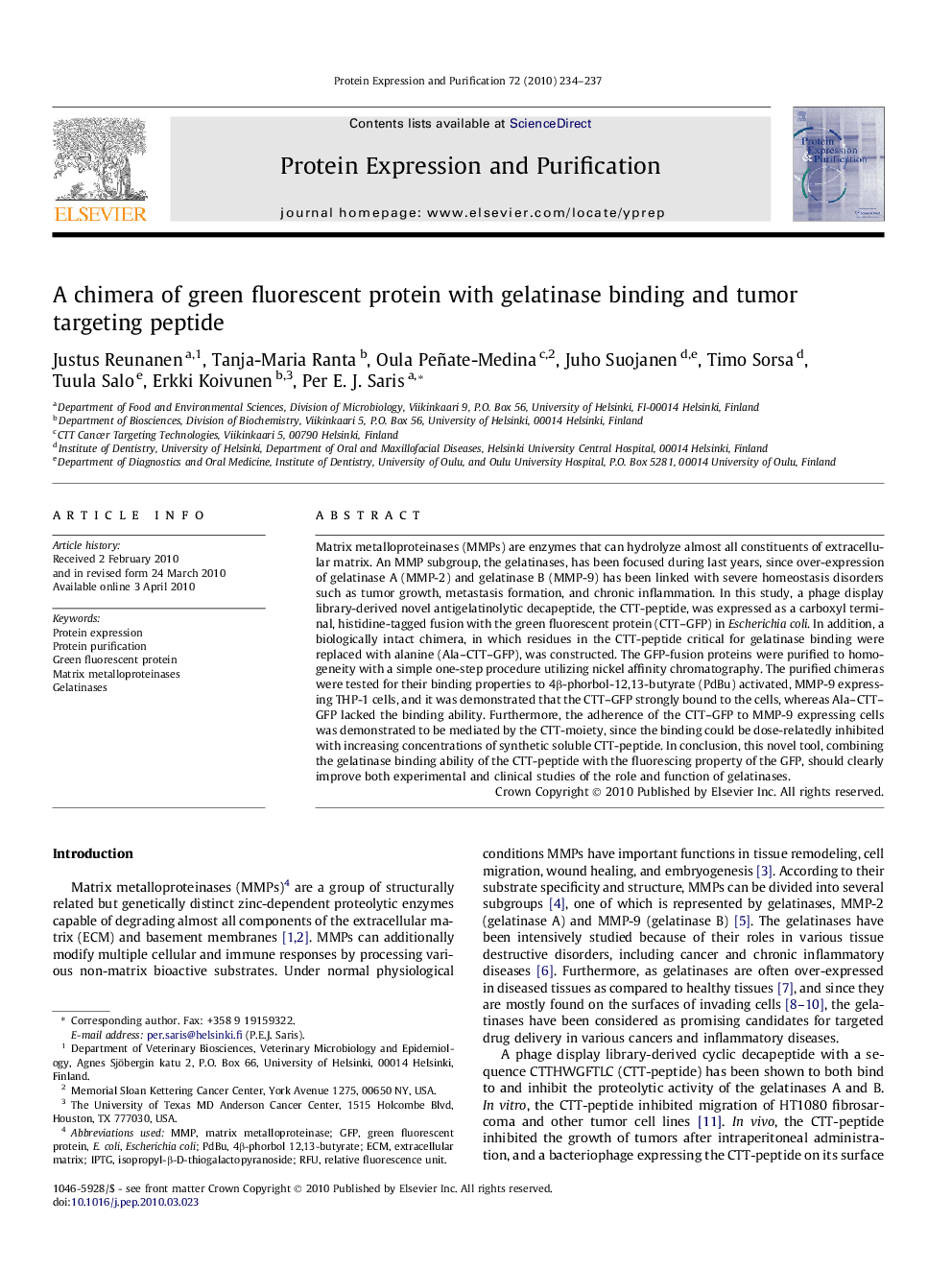| Article ID | Journal | Published Year | Pages | File Type |
|---|---|---|---|---|
| 2021091 | Protein Expression and Purification | 2010 | 4 Pages |
Abstract
Matrix metalloproteinases (MMPs) are enzymes that can hydrolyze almost all constituents of extracellular matrix. An MMP subgroup, the gelatinases, has been focused during last years, since over-expression of gelatinase A (MMP-2) and gelatinase B (MMP-9) has been linked with severe homeostasis disorders such as tumor growth, metastasis formation, and chronic inflammation. In this study, a phage display library-derived novel antigelatinolytic decapeptide, the CTT-peptide, was expressed as a carboxyl terminal, histidine-tagged fusion with the green fluorescent protein (CTT-GFP) in Escherichia coli. In addition, a biologically intact chimera, in which residues in the CTT-peptide critical for gelatinase binding were replaced with alanine (Ala-CTT-GFP), was constructed. The GFP-fusion proteins were purified to homogeneity with a simple one-step procedure utilizing nickel affinity chromatography. The purified chimeras were tested for their binding properties to 4β-phorbol-12,13-butyrate (PdBu) activated, MMP-9 expressing THP-1 cells, and it was demonstrated that the CTT-GFP strongly bound to the cells, whereas Ala-CTT-GFP lacked the binding ability. Furthermore, the adherence of the CTT-GFP to MMP-9 expressing cells was demonstrated to be mediated by the CTT-moiety, since the binding could be dose-relatedly inhibited with increasing concentrations of synthetic soluble CTT-peptide. In conclusion, this novel tool, combining the gelatinase binding ability of the CTT-peptide with the fluorescing property of the GFP, should clearly improve both experimental and clinical studies of the role and function of gelatinases.
Keywords
Related Topics
Life Sciences
Biochemistry, Genetics and Molecular Biology
Biochemistry
Authors
Justus Reunanen, Tanja-Maria Ranta, Oula Peñate-Medina, Juho Suojanen, Timo Sorsa, Tuula Salo, Erkki Koivunen, Per E.J. Saris,
